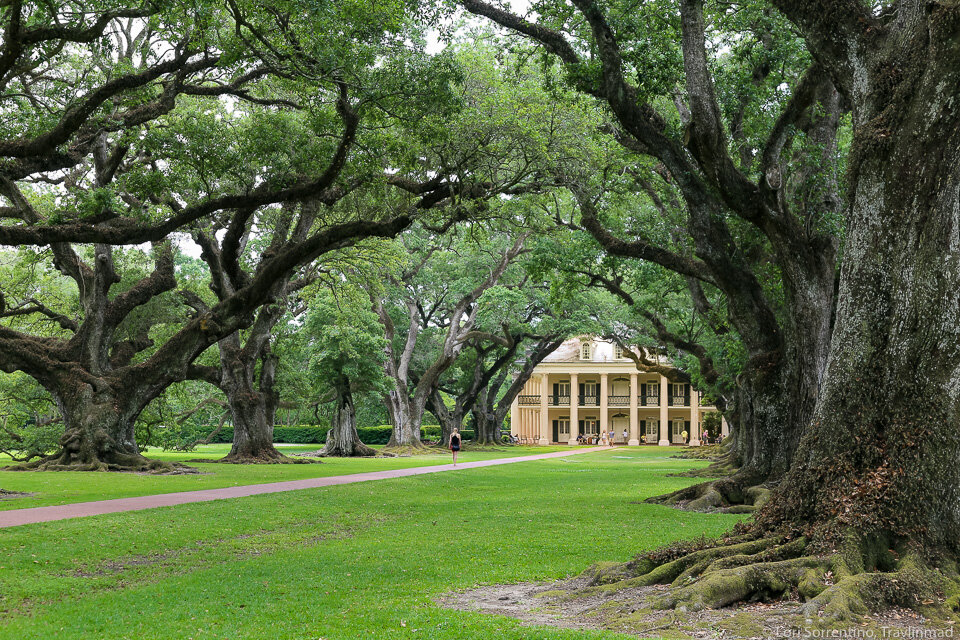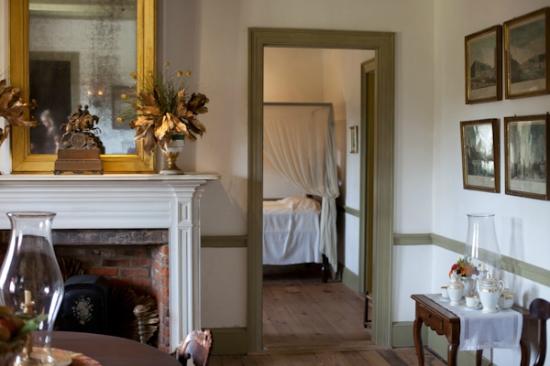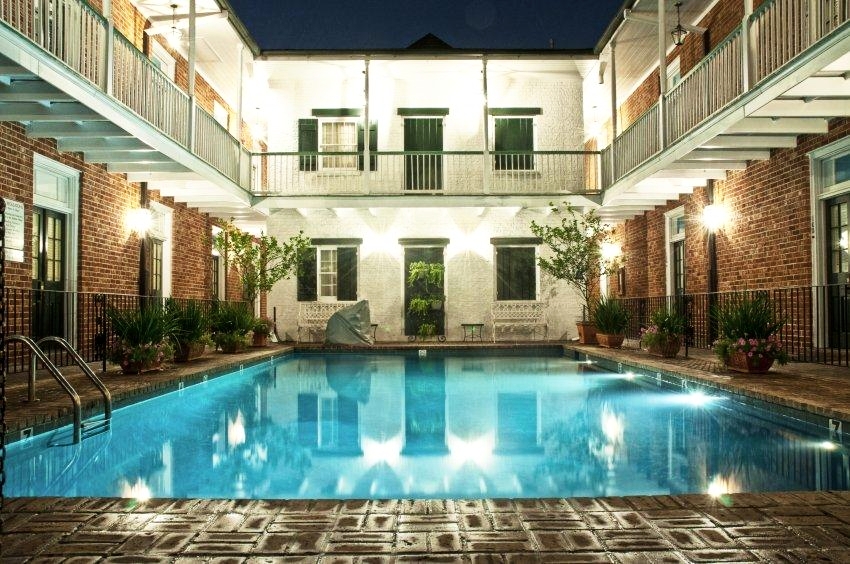3去新奥尔良难忘的种植园long the Great River Road
No visit to New Orleans, Baton Rouge, or Lafayette in south Louisiana would be complete without exploring the New Orleans plantations, some of America's most interesting, and tragic, history.
Mixed in with present day farms and scattered houses are the restored Antebellum-era "big house" plantations, some with refurbished outbuildings and slave cabins.
To visit here is to venture into the opulence, wealth, and power of the plantation owners.
It's also a glimpse into the exploitation, dehumanization, and horrific brutality that was American slavery. It’s impossible to see one without the other — or should be — and the contrast between the two is stark, poignant and heartbreaking.
It's America's history — a difficult story to tell and hear, but nonetheless an experience that shouldn't be missed.
New Orleans Plantations
Of the dozen or so sites you can visit in New Orleans plantation country, seeing2-3 in one day is idealdepending on how long you like to linger.
But keep these things in mind when planning your day:
Most plantations offer guided tourson the hour- so if you arrive at 10:25 am, you'll have to wait :35 minutes until the next tour begins. So plan accordingly.
If you can, call ahead to reserve a tour or put your name on the tour listas soon as you arrive. Some tours are capped or limited to a certain number of participants and you don't want to miss out if there are too many people on that hourly tour.
We opted to see 3 plantations in our day of exploring:Laura Plantation,Oak Alley Plantation, andWhitney Plantation. Laura and Oak Alley are practically next door to each other, and Whitney is just 7 miles down the road. These three, among all the New Orleans plantations, have some of the most unique tours and we felt they were a good mixture for one day.
New Orleans Plantations Along the Great River Road
This article may contain affiliate links. If you click through and purchase, we may earn a small commission, at no extra cost to you.
Oak Alley Plantation
Oak Alley Plantation Tours
3645 Hwy 18 (Great River Road), Vacherie, St. James Parish, LA
Guided Tours- Begin at 9:30 am -5 pm with groups of 35-45 depending on the number of visitors. Second floor is not handicap accessible, however an iPad video is available for viewing the second floor tour. All other exhibits open 9 am - 5 pm.
Our first plantation visit was toOak Alley Plantation, the most famous and photogenic of them all for the double row of live oaks gracefully arching across the main entryway leading to the mansion. It's instantly recognizable from photos, TV, and films likeHush, Hush Sweet CharlotteandInterview with a Vampire. That long lane of 28 beautiful trees nearly a quarter mile long personifies what many think the antebellum south must have looked like. Oak Alley is certainly unique with its handsomeGone With The Windgood looks.
Dating to 1839 and situated on the west bank of the Mississippi River, it was originally calledBon Sejour Plantationand was established to grow sugar cane. The mansion, built in the Greek Revival style and now a National Historic Landmark for its architecture and landscaping, is imposing but fits perfectly into the setting.
Across the two lane road in front of the property is a high levee to control the mighty Mississippi River when it rises. We were surprised to see the tall stacks of a large paddle wheel cruise ship docked at the levee which explained the hordes of tourists we were seeing.
Visitors are free to roam the grounds on their own which we did, and it gives you time to visit the Sugarcane Theater and the Slavery Alley exhibit with its small rustic cabins. At the end of Slavery Alley is a large Blacksmith shop with a rare 1890s era forge where demonstrations of smithing are done on certain days.
We took our time wandering through this area, imagining what life must have been like for those enslaved here. Looking at cabins alone is such a small part of the history of these plantations and tells us little about the people themselves.
To help satisfy some of our curiosity we decided to take the tour of the "big house". This turned out to be worthwhile, and we encourage you to take the tour.
Next to a side porch is the Plantation Bell. Cast in 1848, it was used to signal things like meal time or calling the slaves in from the fields. Today it's rung to signal the start of each guided tour. So once you've signed up, listen for the bell.
Our guide was excellent, sharing historical fact and anecdotal perspectives of both the owners and slaves. After a brief description of each room and its mostly original furnishings, he shared stories of the "house slaves" and what their lives must have been like, including the ongoing tension and anxiety over the failing health of the Master of the house, and the impending War Between the States.
The guide even included some juicy gossip about the family and the many skeletons in their closet. The tour took just an hour, and we could have easily spent several more trying to understand the people and how their lives were so different, yet intertwined.
Of the generations of slaves at Oak Alley, many were already skilled craftsmen in their native lands, and those skills were sought after by opportunistic slavers looking to expand their stable of talent. Such skills like carpentry, masonry, farming and iron work built these plantations and kept them running.
A great example of how skilled they were is the perfect grafting of pecan trees on this plantation in 1846 by a slave gardener known only as Antoine. Those thin-shelled pecans of Louisiana became known as the Centennial Variety, but sadly all of the original trees were cleared to make room for the more profitable sugarcane.
All historic references aside, the setting at Oak Alley is lovely and picturesque - and highly romanticized to be sure. It's easy to see why it's one of the most popular plantations to visit, and therefore very crowded at certain times. Along with an onsite restaurant and B&B cottages, the visitor experience and tour of Oak Alley Plantation is definitely worth a visit.
拍照小技巧:保持直到日落
If you're staying overnight nearby and want the ideal photos of Oak Alley with the late afternoon lighting and no people, come back at sunset and stay until the blue hour fades.
Better yet, juststay overnight at Oak Alley!
Laura Plantation
Laura Plantation Tours
2247 Hwy 18 (Great River Road), Vacherie, St. James Parish, LA
Guided Tours -75-80 minute guided tours hourly 10am-4pm (last tour).
Originally called l'Habitation Duparc after its 1804 owner Guillaume Duparc,Laura Plantationbecame the first historic attraction in Louisiana to include stories of slaves as part of a tour. Four generations of one Creole family lived here with four generations of women running the plantation.
The "big house", or manor house, was built by skilled slave craftsmen in the raised Louisiana Creole style. It must have been magnificent in its day with its bright colors and unusual U-shape, and is now on the National Register of Historic Places.
The plantation was named for Laura Locoul in the late 19th century by her father. Born on the plantation in 1861, we found her a very intriguing personality. In 1892 she sold the property with the stipulation that it would remain Laura Plantation as it was then, and still is today.
In 1993, her 1936 unpublished handwritten manuscript,Memories of the Old Plantation Home,was recovered. Her anecdotes and stories of Creole life on the plantation are shared daily by tour guides, adding a personal feel as you walk along where she once walked.
The guided tour takes around 75-80 minutes and involves a good bit of walking, about a quarter mile. The tour winds around the grounds, slave cabins, and through the big house.
For a self-guided tour on your own, there's a museum-style exhibit in the restored overseer's cottage which opened in 2017 - "From the Big House to the Quarters: Slavery on Laura Plantation."
There's a lot of information to absorb in the exhibit - stories about the lives of slaves, plantation life, and interaction with their owners. But for me, it was the photographs, being able to see a face, their expressions and their eyes. This is an amazing collection so don't pass up seeing it.
We enjoyed the Laura Plantation tour and thought the setting at Laura Plantation was more relaxed than at Oak Alley. Both were very informative but the cruise ship crowds at Oak Alley seemed to detract from the experience, though it may not be like that every day.
For us, the pace at Laura Plantation was better, and the tour more comprehensive. We also really enjoyed the personal perspective from which is was told from the women and slaves.
Whitney Plantation
Whitney Plantation Tours
5099 Hwy 18 (Great River Road), Wallace, St. John the Baptist Parish, LA
Guided Tours -90 minute guided tours hourly 10am-3pm (last tour). Advance ticket purchase recommended.
仅7英里的历史河流从橡树Alley is Whitney Plantation, an excellent contrast to Oak Alley, and must see on your visit.
Nearly 20 years ago, the property was purchased by wealthy New Orleans lawyer John Cummings, who spent 8 million dollars of his own money and nearly 15 years after purchasing the property turning it into the first museum of its kind dedicated to telling the story of slavery in Louisiana.
Originally calledHabitation Haydel在德国家庭谁拥有它之后,plantation and museum are now on the National Register of Historic Places.
We took the 90 minute tour with our guide, Ali, and (spoiler alert) it was one of the best New Orleans plantation tours we took - unlike any tour we've taken. A tour of Whitney is not a touristy walk through the romantic south with its gentility and excess. Here, the story is presented completely from the perspective of the slaves, their lives on the plantation and their experience.
Upon registration, you're given a lanyard to wear with the name of a slave and a photo of a sculpted statue located on the property. Everyone's card had the name of a slave who resided at Whitney Plantation. On the back of the card was a brief quote along with the person's age at the time their story was transcribed (ca. 1940).
These quotes, along with others seen throughout the property were taken from the1936-40 Federal Writer's Projectwhich documented life on southern plantations through first-person narratives of former slaves. It was a poignant start to our tour.
My card depicted Ceceil George, age 94. My wife's card had Carlyle Stewart, age 87.
Antioch Baptist Church
The first stop on the tour was a restoredfreedmen's church, which was erected after the Civil War on the east bank of the Mississippi River, but is not original to the Whitney Plantation. The church's local congregation donated it to Whitney and it was floated across the Mississippi and restored onsite where it stands today.
A short film on the slave history of Whitney is shown inside to start, but perhaps the most compelling feature of the church are the sculpted clay statues of slave children standing, sitting, staring. The eerie gaze of the ghostly eyeless statues made the film all the more poignant.
We left the church feeling sad, and angry.
“Everybody worked, young and ole; if you could only carry two or three sugar cane, yo’ worked. No school, no church...”
The Children of Whitney
Whitney Plantation owner John Cummings commissioned artist Woodrow Nash to create a series of sculptures that represented the former slaves who lived here. TheChildren of Whitneypresents the experiences of these children as told in their own words, and you’re brought into their lives as enslaved children.
The statues - modeled using original photos - are set in the church, the cabins, sitting on porches and outside of buildings. It's impossible to look away. Mr. Nash intentionally left empty the space where their eyes would be to convey a sense of utter hopelessness. And it works. The statues leave an indelible impression on you.
“Yo’ has to put yo’ candle out early and shut yo’self up, den get up while it’s still dark an’ start to work.”
旅游风通过房地产过去的过去surviving example of a trueFrench Creole barn, thepigeonniers(roosting houses for pigeons that were eaten regularly), hugecopper sugar kettles, and what is believed to be the oldestdetached kitchenin Louisiana. Inside this kitchen, meals were prepared for all the workers returning from the fields as well as for the Big House.
The 7restored slave cabins(2 original and 5 from area plantations) are haunting. They are simple one room wooden cabins with a fireplace, small table and sometimes a simple rope bed built into a corner of the room. At times up to 15 or more people were housed in one small room. It's hard to imagine living in such crowded conditions in the sweltering heat and humidity of the long Louisiana summer, not to mention the mosquitos.
Maybe it was enough to just be able to lie down and close your eyes after working to near exhaustion in the cane fields everyday.
Nearby and on full view of the cabins is the cage - or jail - a witness to the sheer brutality of plantation life. The large iron crate had previously been used to hold slaves during auctions with only small holes throughout for air. The day we visited was hot and sunny and I went inside and closed the door behind me. I could barely breathe.
“I was born in 1853.... I worked, carrying sugar cane, I could only tote 5 stalks at a time....they had straps and a whip....and they better not catch you praying to God.”
TheBig Houseis considered the earliest and best preserved raised Creole cottage in Louisiana. Slaves made the bricks and built the Big House from the mud of the Mississippi River and were experienced farmers who knew how to control water from flooding to optimize the planted fields - most important when growing sugar cane. From the buildings to the crops, all of this was built by skilled craftsmen, who now were slaves.
The various memorials on the property are sobering. TheWall of Honoris dedicated to all those who were enslaved here. Documented from remaining records, their 354 names - some with the country of origin, skill, and approximate date of birth - are engraved on granite slabs along with first person narratives which give a sense of life to the names.
TheAllées Gwendolyn Midlo Hall memorial gardenand theField of Angelsarealso dedicated to the area slaves and infant children who lived and died in St. John the Baptist Parish.
The 90-minute tour at Whitney Plantation was our favorite presentation of the three New Orleans Plantations we visited. They delve much deeper on the back stories of plantation life and tell the story of slavery from a humanistic and economic standpoint. It's arresting and provocative - and horrifying when you're reminded again and again whose words are being spoken.
Cage at Whitney Plantation
What to Expect From Your Tour of the New Orleans Plantations
The three tours at Oak Alley Plantation, Laura Plantation, and Whitney Plantation all tell fascinating stories, and all three are unique in their presentation. You can easily visit all 3 if you have one day or aweekend in New Orleans. Here are tour details to remember as you plan:
The tour atOak Alley Plantationis of the Big House only - the grand spectacle of all Louisiana plantations - and while the guides do weave together perspectives from both owners and the enslaved, the rest of the grounds are left for you to explore on your own.
AtLaura Plantation,the presentation is told largely through the manuscript of Laura Locoul, making for a fascinating and personal account of life on the plantation.
TheWhitney Plantationtour tells the "Story of Slavery" in an arresting way from the words of those who lived it, which makes for a compelling tour that may likely be uncomfortable or awkward at times.
There is plenty written and portrayed about life on the River Road plantations, the lavish lifestyle of the southern aristocracy, the brutality of slavery. Most of us could never empathize with the idea of being enslaved, or describe the brutality and inhumanity which these human beings endured.
What we can describe is how seeing this made us feel, and made us think. Perhaps most disturbing is the norm which deemed it perfectly acceptable and desirable to own men, women, and children as property. It's sickening to comprehend the notion of children as 'natural fruits' (as defined by the Louisiana Slave Code photo at the beginning in case you missed that abhorrent idea).
Many attempts at engaging in meaningful dialogue about race and slavery so often fall short because we often don't know the questions to ask, or the best way to ask them without fear of offense, hurt, or embarrassment.
Without a doubt, the New Orleans plantations were built on the backs of these enslaved individuals. And the subject is awkward, confusing, uncomfortable, and painful. But taking a tour of these plantations along River Road opens the door and at least begins an important conversation - even if it's just with yourself.
Where to Stay in New Orleans
If you want to spend more time in the plantation country, we recommend staying at one of the Plantations for an unforgettable overnight experience. There are several with on-site Inns you can stay in:Nottaway Plantation,Oak Alley Plantation, andDestrehan Plantation.
We loved the historic酒店在霍家Plantation— it’s a perfect place to stay to explore most of the plantations, and has an on-site restaurant (we thought this was a big plus, as there aren’t many restaurants along the River Road).
If you want to kick it up at one of the funNew Orleans hotels, there are plenty of good ones.
French Quarter
Four Points Sheraton
You might recognize the expansive wraparound balcony of theFour Points Sheratonbut don’t let its grand exterior fool you - its a terrific value with a perfect Boubon Street location!
Check out their rates and more details here.
Hotel Provincial
For a bit more quiet than staying squarely on Bourbon Street - and a lot more elegance - try theHotel Provincial. This is such a beautiful property with a sublime pool for you or the kids. Plus its in the heart of the French Quarter, just steps away from the action.
Garden District
Hotel Indigo New Orleans Garden District
One of our favorite boutique hotels in the NOLA Garden District is theHotel Indigo New Orleans Garden District.We didn't expect to love the modern design since we were looking for something a bit more historic, but we enjoyed the location and the cool design. Plus the reasonable rates make it agreat value.
Check rates and availability here.
Have You Been to the New Orleans Plantations?
There's a dozen or so plantations to visit in New Orleans Plantation Country, and no right or wrong way to visit them. I'd love to hear your experience if you've visited - share with us below.



















